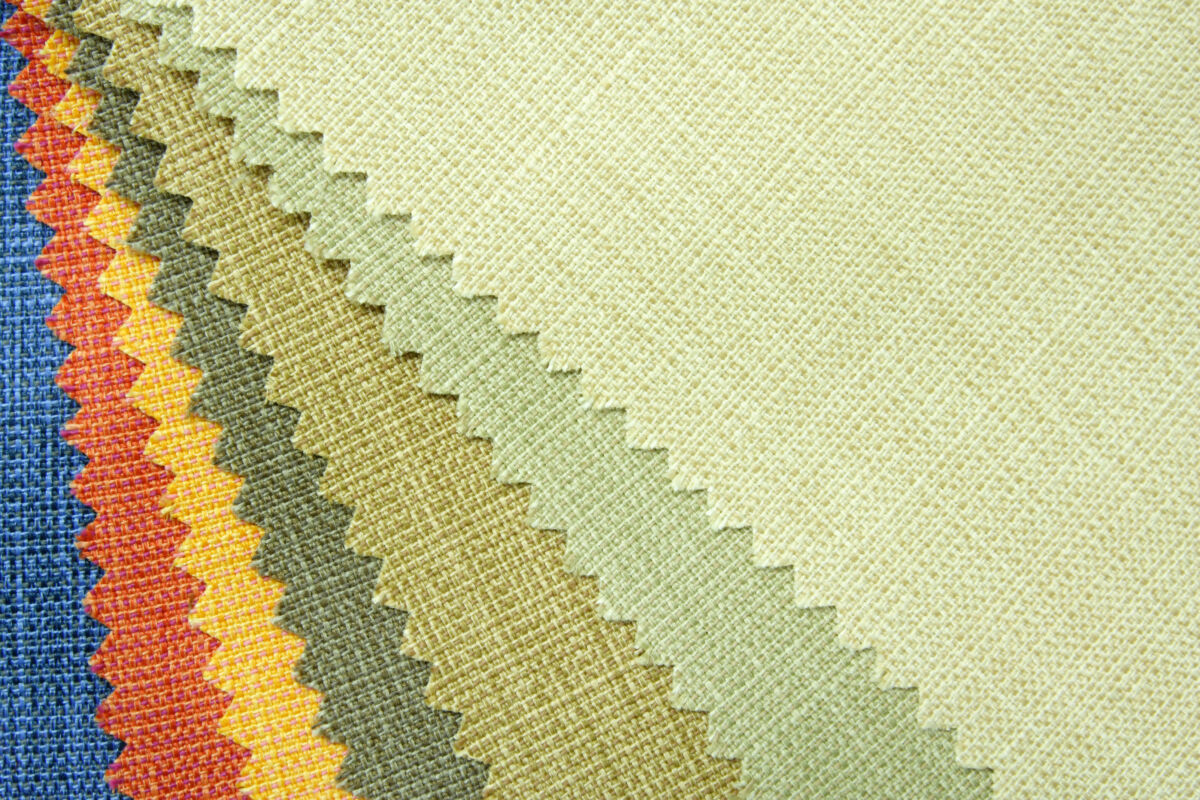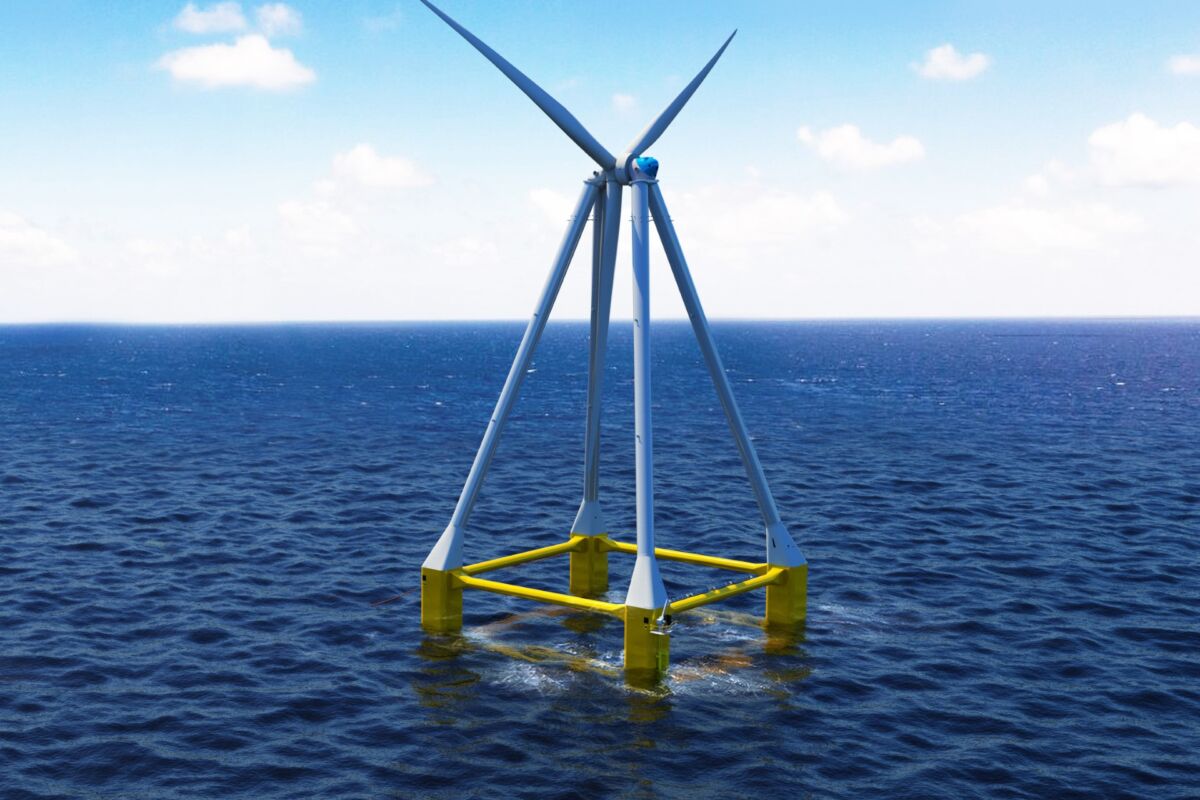A Cumulative Cost Assessment (CCA) aims to identify, assess and, where possible, quantify the cumulative cost generated by selected areas of EU legislation on a given industrial sector. It is retrospective and strictly centred on EU rules. The CCA is all about regulatory costs. Hence, it does not include the benefit side of rules, nor does it assess the cost-benefit balance of the legislation.
Against this background, the CCA of the EU ceramics and glass industries has measured regulatory costs incurred by EU manufacturers of ceramics (bricks and tiles, ceramic tiles, fired refractories and unfired shaped) and glass (refractories, packaging glass, glass tableware and flat glass) and linked to EU legislation in the following areas: i) Internal Market; ii) energy; iii) climate; iv) environment; v) workers’ and workplace safety; and vi) consumers and health legislation. The CCA also compared regulatory costs with production costs and margins registered by ceramics manufacturers, thus revealing the impact of regulation on competitiveness. Regulatory costs, production costs and margins have been assessed over the period 2006-15.
The study relies on primary data collected via semi-structure interviews with 100 ceramics and glass plants across all EU Member States. Data have been analysed by applying the standard cost model and regulatory cost model. Regulatory costs represent between 2% to 5% of production costs in the sectors under investigation; by contrast, they constitute a much more prominent share of margins, especially in years of crisis.
- Home
- Research
- CEPS Topics
- CEPS Topics
- CEPS Topics
- CEPS Units
- Publications
- Events
- Activities
- Overview
- Programmes
- Membership
- Expert commentaries
Cumulative Costs Assessment (CCA) of the EU Ceramics and Glass Industries
When
Where
Participation in this event is free of charge.
When
Where
Participation in this event is exceptionally free of charge.
When
When
Where
Participation in this event is exceptionally free of charge. A sandwich lunch will be served from 13.00 onwards.
Related Projects
Click on the links below to view related projects, or click on the button to view all projects.
Advanced digital skills are key to Europe's technological and economic future. These vital competencies - from artificial intelligence to cybersecurity…
Years 2023–2024 were marked by the arrival of AI regulation around the world, including the EU AI Act and the…
The W2W project will produce and validate a comprehensive framework for multi-dimensional cascade valorisation of wood from C&D and furniture…
Launched in January 2024, the PESCO-UP project focuses on transforming mixed polyester/cotton waste into high-quality and clean materials for the…
The need to approach climate action, resource efficiency, and circularity performance as integrated, economy-wide, cross-cutting issues is growingly gaining attention…
MultiFutures systematically broadens the scope for policy action towards sustainable societies by assessing and developing transition scenarios based on alternative…
Artificial Intelligence (AI) holds tremendous potential to enhance human decisions and to avoid cognitive overload and bias in high-stakes scenarios.…
The three-year project is aimed at enhancing CEPS research activities in the fields of research and innovation (R&I) policy, women’s…
The Horizon Europe project BLOW aims at unlocking the Black sea fLoating Offshore Wind potential, by demonstrating a disruptive cost-efficient floating integrative…
The media sector is exposed to and undergoing continuous innovations that occur at a pace never seen before and have…
NEUROCLIMA aims at establishing a mindset, articulated through processes, frameworks, services & interfaces for the support and establishment of systemic…
For the last two decades, European countries have faced unprecedented structural changes due to digitalisation, automation; the internationalisation of the…
The TTD is an EU-funded project designed to support the EU-U.S. Trade and Technology Council (TTC), which serves as a forum for the European…
Funded through the Horizon Europe Programme, the 4-year BATRAW project will help guarantee a stable raw material supply chain to…
ORBIS addresses the disconnects between ambitious ideas and collective actions at a large socio-technical scale. It responds to the profound…
The European Union lacks a coordinated approach to the development of artificial intelligence (AI). This has led to a fragmented…
The Conference on the Future of Europe is a milestone in the history of the development of participatory democracy in…
CEPS is carrying out the study “Cancer: Repository of Regional Prevention and Detection Policies”, a specific contract implementing the framework…
Generative artificial intelligence is artificial intelligence that is capable of generating text, images, videos or other data using generative models.…
The emergence of powerful generative AI systems prompted a reconsideration of many previous findings and predictions. A recent study observed…
This project is focused on the production of a thematic report on FP10, the future EU framework programme for research…
Economy-wide assessments of regional trade agreements often fall short of capturing the complexity of agri-food trade policies especially in the…
This study will examine the medium-term time-horizon (3-8 years) of the emerging infectious diseases (EID) threat spectrum in a manner…
The EU-GCC Dialogue on Economic Diversification project initiated its activities in April 2018. Its overall objective is to contribute to…
C4U is a holistic interdisciplinary project addressing all the essential elements required for the optimal integration of CO2 capture in…
The future of renewable energy and smart mobility depends upon permanent magnets (PMs), and those magnets depend upon Rare Earth…
(1) CEPS will contribute Ethical, Legal, Socio-Economic (ELSE) research and guidelines for the FLEXIGROBOTS platform (WP2, lead for task 4…
The impact of the COVID-19 pandemic has been deep and wide. In spite of unprecedented efforts to understand the COVID-19…
In recent years there has been a renewed interest in chemical recycling technologies as demonstrated by various announcements for R&D…
The Hidden Treasures Program, a joint initiative by Donald Kalff and Andrea Renda launched in the fall of 2019, aims…
The purpose of VISTA is to promote and stimulate the academic interest in the EU Single Market. The ways to…
This contract concerns the implementation of stakeholder engagement activities related to the EU eco-innovation policy and initiatives, especially in the…
The Integrated Strategic Energy Technology (SET) Plan sets outs 10 priority actions to accelerate the transformation of the EU’s energy…
The objective of this project is to analyse the compatibility of a simultaneous uptake of renewable hydrogen produced from electrolysis using wind and…
This six-year project, which started in April 2015 for three years and was followed by a second edition of another…
The EU-GCC Clean Energy Network, funded by the European Union, initiated its activities in 2010, as a response to the…
Climate neutrality will require negative emissions; beyond mid-century, net- negative emissions will become an obligation. The climate-neutral scenarios of the…
The ultimate objectives of TRIGGER are to provide EU institutions with knowledge and tools to enhance their actorness, effectiveness and…
The beginning of this decade is shaping up to be a pivotal point in the future of the digital agenda…
The study aims at assisting the Commission in drafting a possible policy intervention to address the current need for cybersecurity…
The Executive Agency for Small and Medium-sized Enterprises (EASME) is conducting the study “Big Data and B2B platforms: the next…
The project aims to (i) provide a consistent, comprehensive and transparent understanding of the global RE supply chain; (ii) identify…
Green Steel for Europe supports the EU towards achieving the 2030 climate and energy targets and the 2050 long-term strategy…
CEPS analysed the closed and open questions for two open public consultations related to two legislative initiatives as part of…
The proposed project will analyse the potential impact of the COVID-19 pandemic and the ensuing economic crisis on various aspects…
CIRC4Life aims to develop and implement a circular economy approach for sustainable products and services through their value and supply…
Seismic changes in global geopolitics, the rapid rise of global production networks, increasing disputes surrounding trade integration initiatives and challenges…
The study’s aim is to assist the Commission in evaluating the existing legal and policy framework applicable to the security…
The Study to support an Impact Assessment of Regulatory Requirements for Artificial Intelligence in Europe consists of 3 parts: 1.)…
In the context of the EU’s forthcoming AI Strategy, CEPS is participating in a large-scale behavioural research study on civil…
The objectives of this project were to identify, present and communicate the opportunities from the Corona crisis for coal phase-out;…
The project addresses the question of how a fresh policy approach linking circular economy and climate change could look in…
The objectives of this project are: To bring the potential of the Black Sea renewable (wind) to the attention of…
CEPS is supporting through a partnership the United Nations Environment Programme (UNEP) in implementing the project ‘Mainstreaming coherent and effective…
The objective of the study was to assist the Commission’s Impact Assessment process in providing it with robust evidence as…
The potential gains from further removal of barriers in the EU Single Market to the free movement of services is…
CICERONE, a Horizon 2020 EU-funded project, brings together programme owners, research organizations and other stakeholders to create a platform for…
The Energy Efficiency Directive (EED) places an obligation on Member States to promote the availability to final customers of high-quality…
The output of this project is a policy brief, published by CEPS in the CEPS Policy Insights series on 19…
The Directorate general for Financial Stability, Financial Services and Capital Markets Union (DG FISMA) has commissioned Centre for European Policy…
The study analyses the role of e-commerce in the Internal Market and provides a framework to answer the question of…
The goal of the research project is to develop and test a monitoring tool to assess occurrence, impact and pass-through…
The study examines the current methodologies used for tracking climate-related and biodiversity-related expenditure in the EU budget. It identifies strengths…
The key objective of this study, conducted by CEPS for the Royal Institute for Strategic Studies (IRES) (Morocco) is to…
The project aims at raising awareness about the European Cohesion Policy in South Europe through the realization of a global…
The objective of the project is to make an independent assessment of the role of forests, based on CEPS own…
The primary objective of the project was to write a report, analysing the potential contribution of the Internet of Things…
This project has been commissioned by DG EMPL to map the opportunities and challenges for micro and small enterprises in…
The study provided an analysis of the EU’s instruments to tackle aggressive tax planning and harmful tax practices. The study…
i+ii.) Objectives and tasks: The study looked at the many ways in which digital solutions can be implemented on the…
CEPS, in cooperation with COWI, prepared a large study on the competitiveness of the renewable energy sector for DG ENER…
CEPS carried out this study for the Section for the Single Market, Production and Consumption of the European Economic and…
This report was conducted by the Centre for European Policy Studies (CEPS) within the “Strategic Partnerships for the Implementation of…
This Report, a joint effort between Donald Kalff and a group of CEPS researchers led by Andrea Renda, aims at…
The Impact of Euroscepticism in the construction of Europe is a project under the EU program Europe for Citizensinvolving five cities, namely Gijón (Spain), Nüremberg…
The purpose of the study is to assess how national options and discretions under the DGSD are implemented in practice,…
In compliance with Article 13 of Decision (EU) 2015/2240 establishing the ISA2 programme, the interim evaluation assessed the relevance, effectiveness,…
This Study presents an evaluation of the implementation of the innovation principle, limited to two of its three components, i.e.…
Over the past few decades, new digital platforms such as China’s Alibaba, Japan’s Rakuten and the U.S.’s eBay have grown…
CEPS was commissioned to carry out a “Comparative study on energy policies in the EU macro-regions”, within the framework of…
The overarching goal of SET-Nav was to support strategic decision making in Europe’s energy sector, enhancing innovation towards a clean,…
This paper discusses from a legal perspective how, over the past years, the SRB has performed against the main goals…
This project consisted in a report and related meeting supported by EUMICON, the European Mineral Resources Confederation. The report provided…
The H2020 MAKERS project aimed at bringing together leaders from business, academia and policy to study issues related to the…
The project aimed to formulate and discuss ideas to further develop EU energy policy frameworks and funds that can enable…
Germany’s Network Enforcement Act, or NetzDG law represents a key test for combatting hate speech on the internet. Under the…
This paper addressed two distinct yet interconnected problems. The first is whether the provision of Emergency Liquidity Assistance (ELA) on…
In September 2019 Europe’s financial markets will undergo a revolution. From that date, the Payment Services Directive (PSD2) will require…
The Mission of the Peopleʼs Republic of China to the EU provided funds to CEPS in the framework of a…
The linear economy, wherein natural resources are obtained, turned into products and discarded as waste after limited time, was for…
The Study starts from the 2015 ESPAS Global Trends Report, which identified five global economic and social trends to 2030,…
The IPEPS project aims at complementing degree-level programmes led by Universities by enriching the background knowledge that students acquire in…
Based on primary data collected from 189 plants over a 10-year period (2008-2017) via an email survey and follow-up interviews,…
The CARISMA project was a Coordination and Support Action funded by Horizon 2020 with two overall objectives. First, through effective…
This Study serves as the Final Report for the DG TAXUD Project “Study contributing to an Impact Assessment on Council…
More than 3.5 billion people use the Internet today, up from a mere 738 million in 2000, according to a…
This Study contributes to filling the knowledge gap on tech transfer in Europe by providing more information on licencing practices…
This study discusses the challenges concerning bank valuation reports in resolution. The resolution mechanism has three types of valuation reports,…
This document contains a proposal by the Centre for European Policy Studies (CEPS) for preparing an impact assessment of possible…
The aim of this study is to provide an assessment of the application of the reciprocity principle in EU agri-food…
Drafting of a Policy brief for the European Parliament, INCOM Committee, on fake news. Fake news is certainly not a…
European air travel has witnessed a tremendous evolution since the late 1990s following the liberalisation process, with many new entrants…
This project involved an analysis of the carbon leakage risk indicators that will apply from 2021 onwards for EU ETS…
Bank failures have multiple causes though they are typically precipitated by a rapidly unfolding funding crisis. The European Union’s new…
The conference explored ways in which digital technologies can contribute to the resilience of EU society, with specific emphasis on…
CEPS was commissioned to perform the study-project “Online talent platforms, labour market intermediaries and the changing world of work”, which…
This report presents the assessment of the impacts of a potential EU measure on cash payment restrictions (either a prohibition…
This paper defined critical banking functions and considers whether there is a need for further legal/regulatory clarification if liquidation is…
CEPS received a grant from the European Climate Foundation “to inform the decision-making processes at the European, regional and national…
2030 governance project (2015-17) CEPS' ECH (Energy Climate House) is partners in a project for the German energy ministry (BMWi)…
The purpose of this Study was to contribute to the Impact Assessment of a possible revision of Council Directive 1992/83/EEC…
The Smart Cities Information System (SCIS) is a knowledge platform to exchange data, experience and know-how and to collaborate on…
This study carries out an ex-ante impact assessment of substantial amendments put forward by the IMCO and JURI Committees of…
The EU budget imposes a considerable number of conditionalities on the Member States in use of the EU budget, and…
The first part of the paper considered the effects of pre-empting a resolution procedure for a troubled financial institution by…
The study analyses the experience of China and the EU in bridging the digital divide. It is based on desk…
In compliance with Article 13 of Regulation (EU) No 250/2014 establishing the Hercule III Programme, the Evaluation Roadmap prepared by…
The Study consists of two components. The first one concerns an assessment of the status of implementation, covering both the…
This study was conducted for the European Parliament IMCO Committee. After setting out the background of recent EU initiatives in…
Digitalisation is transforming business landscapes and the world of work, and redefining the boundaries of production, consumption and distribution. This…
This report, commissioned by RegWatchEurope, looks at the feasibility of a Commission’s initiative aimed at adopting reduction targets for regulatory…
European banks have accumulated more than €1 trillion in non-performing loans (NPLs) on their balance sheets after the burst of…
The study arose from a need to revise the application of the Mutual Recognition principle and the implementation of the…
The project aimed to deepen the EU-Brazil Strategic Partnership and bilateral relations between the parties, by supporting the development of…
The Single Resolution Mechanism, which started in January 2016, must ensure that even the largest, most interconnected and complex bank…
Since its inception in 2003/4, the European Neighbourhood Policy (ENP) has attracted the interest of many research analysts across a…
The POCACITO project -foresight study for sustainable pathways towards liveable, affordable and prospering cities in a world context – was…
The aim of this action was to facilitate and guide the RES policy dialogue for the period towards 2030. This…
As technology and new business models evolve at a breath-taking pace in various sectors of the economy, governments are becoming…
A key platform for the EU’s economy over the coming decades will be the consolidation of an online eCommerce market…
This report analyses the proposed reform of the e-communications regulatory framework presented by the European Commission in September 2016. While…
The study provides a stocktaking exercise of the state of play in the Digital Single Market and offers a critical…
The Bank Recovery and Resolution Directive (BRRD) foresees a minimum requirement for eligible liabilities and own funds (MREL) that banks…
The GreenEcoNet project developed the first European-based platform to support small and medium-sized enterprises (SMEs) in greening their business and…
This CEPS project focused on analysing the impacts of climate change mitigation measures and policies on the three pillars of…
This report considers potential policy options to promote ‘systemic innovation’ that foster decarbonisation, with a specific focus on the EU.…
The European Commission has invited the Technopolis Group, the Oxford Internet Institute (OII) and the Centre for European Policy Studies…
The study consists of a Fitness Check on the Construction Sector in the policy areas of Internal Market and Energy…
The purpose of this project was to assess, in an empirical and factual manner, the recent functioning of ASEM ever…
The general objective of this study is to complement and support the Commission roadmap following the Green Paper for the…
This study examines energy prices for a selection of five energy-intensive sectors of EU industry: i) steel; ii) aluminium (primary…
Regulation has for a long time been considered mainly as an obstacle to innovation, especially with respect to rules that…
CEPS was commissioned to write a study on labour mobility for the Dutch Presidency. Specifically the study assessed the situation…
POLIMP explored knowledge gaps about implications of possible directions of international climate policies for different policy and decision-making levels. It…
The objective of DIA-CORE was to ensure a continuous assessment of the existing policy mechanisms and to establish a fruitful…
The ancient Silk Road consisted of a network of paths, mountain passes and ‘branches’ used by daring traders to connect…
CES-MED is a programme financed by the European Neighbourhood Partnership Instrument (ENPI), which is the main financial mechanism through which assistance…
FLAGSHIP is an FP7 project, funded by the European Commission (DG RESEARCH) under the “Socio-Economic Sciences and Humanities” theme, with…
CEPS worked with the Thai National Broadcasting and Telecommunications Commission to develop a strategy for its future Internet Policy. The…
• Project conducted a systematic and consistent overview on the existing efforts to measure sustainable development and the transformation to…
The Transatlantic Trade and Investment Partnership (TTIP) is an effort by the United States and the European Union to reposition…
This study provides an ex-post evaluation of the EU copyright framework as provided by EU Directive 29/2001 on Copyright in…
This study explores the existing policy problems and the possible options for reforming the EU copyright framework as provided by…
The objective of the NorthSeaGrid project was to outline the financial and regulatory barriers to implementation of an offshore grid…
The European Climate Platform (ECP) is a joint initiative by Mistra’s Climate Policy Research Programme CLIPORE and CEPS established in…
The aim of the APRAISE project (FP7) is to improve the decision basis for EU and national policy makers for…
Climate policy needs to aim at ambitious long-term climate stabilization. This will require managing the transition from carbon intensive to…
CEPS and the College of Europe are working together to conduct a survey to measure the uptake of GPP in…
As part of a framework contract to provide external expertise on energy and climate change policy, this study provided background…
As the contractor for this study CEPS analysed, together with ZEW, the relationships between public expenditures/revenues and the costs of…
The ambitious reform of the Single Market for services triggered by the adoption of the Services Directive is far from…
The general objectives of the study was the assessment of the state of the art of “Converting Sunlight to solar…
The Committee on Internal Market and Consumer Protection (IMCO) of the European Parliament requested a briefing on the subject of…
The overarching aim of Mistra Carbon Exit is to develop societal pathways for the transformative change of the supply chains…
Starting in May 2021, CEPS launched a new edition of its “Young Thinkers Initiative”. CEPS selected 30 brilliant young minds…











































